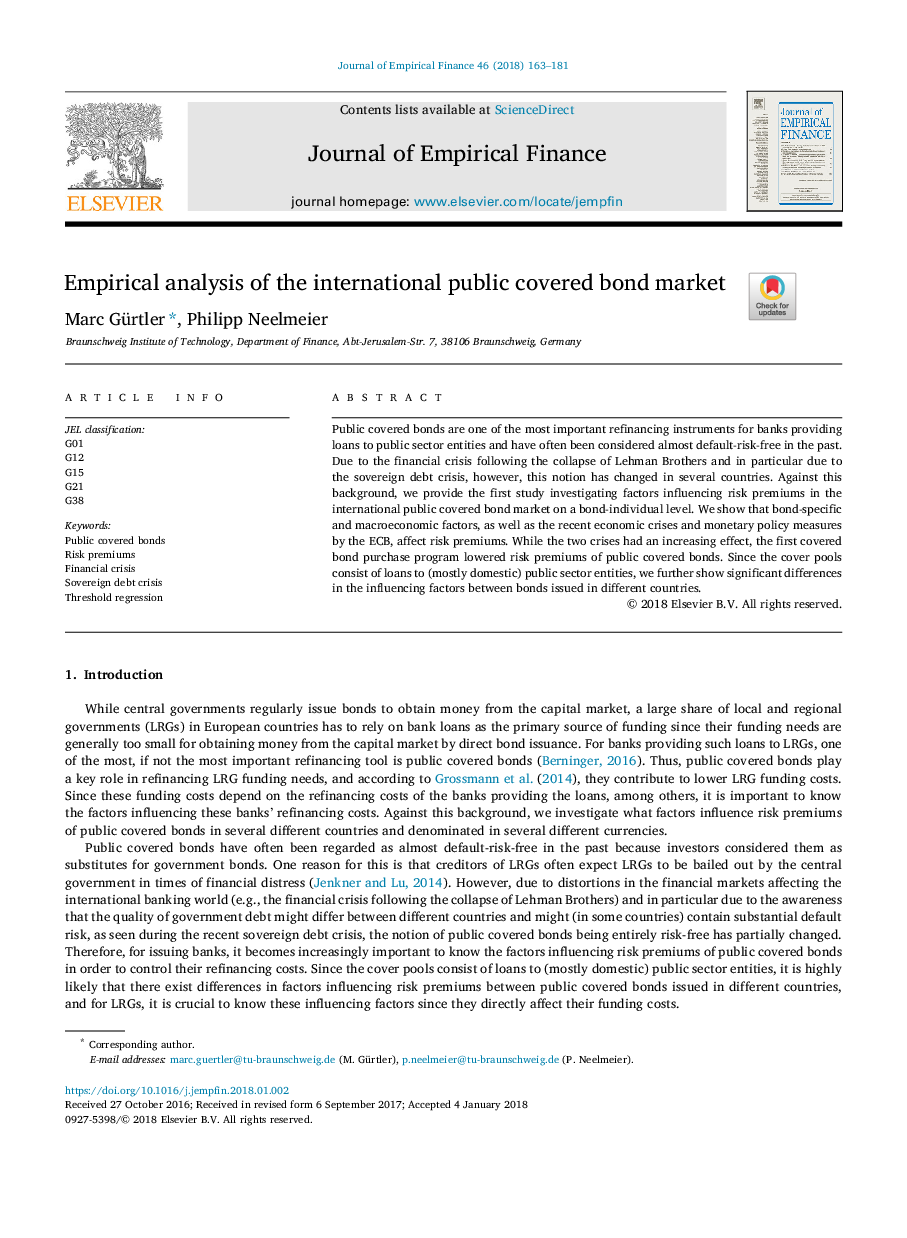| Article ID | Journal | Published Year | Pages | File Type |
|---|---|---|---|---|
| 7360596 | Journal of Empirical Finance | 2018 | 19 Pages |
Abstract
Public covered bonds are one of the most important refinancing instruments for banks providing loans to public sector entities and have often been considered almost default-risk-free in the past. Due to the financial crisis following the collapse of Lehman Brothers and in particular due to the sovereign debt crisis, however, this notion has changed in several countries. Against this background, we provide the first study investigating factors influencing risk premiums in the international public covered bond market on a bond-individual level. We show that bond-specific and macroeconomic factors, as well as the recent economic crises and monetary policy measures by the ECB, affect risk premiums. While the two crises had an increasing effect, the first covered bond purchase program lowered risk premiums of public covered bonds. Since the cover pools consist of loans to (mostly domestic) public sector entities, we further show significant differences in the influencing factors between bonds issued in different countries.
Related Topics
Social Sciences and Humanities
Economics, Econometrics and Finance
Economics and Econometrics
Authors
Marc Gürtler, Philipp Neelmeier,
